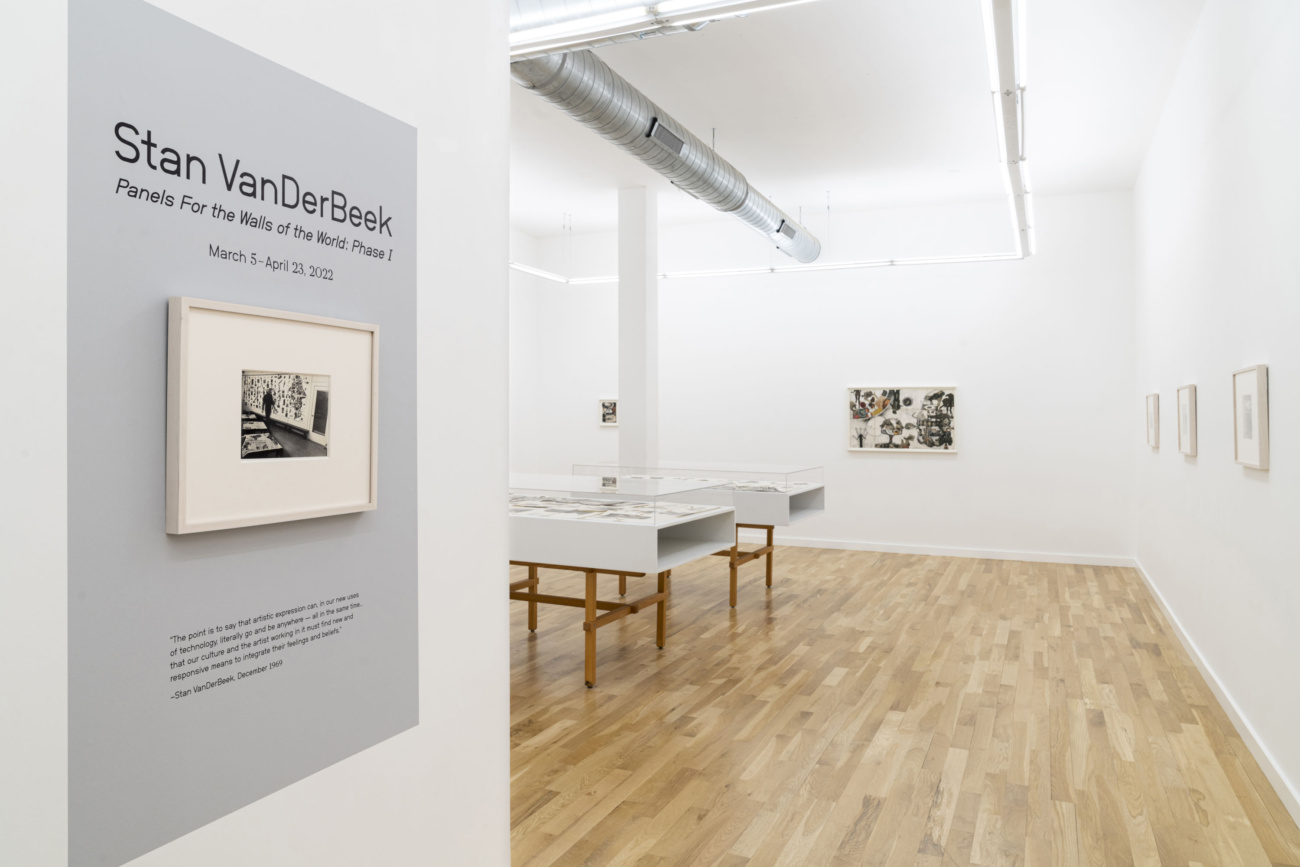





Opening Reception
Saturday, March 5
11:00am–6:00pm
DOCUMENT is pleased to present their second solo exhibition with the Stan VanDerBeek Archive. “Panels for the Walls of the World” is the title of a series of murals realized by Stan VanDerBeek from February-April of 1970. Conceived in 1967 as “telephone murals” VanDerBeek used newly available Xerox Telecopier machines to transmit and output hundreds of mixed media collages combining topical news imagery of the time with the artist’s hand drawn and painted interventions to a variety of public locations simultaneously. When assembled following a particular order designated by VanDerBeek, the black and white, graphic fax transmissions formed a network of multiple larger images that were constantly in process.
The core of this exhibition is Phase I of “Panels for the Walls of the World” which will be transmitted by the Stan VanDerBeek Archive in Brooklyn, NY using the original transmission copies and installed in stages throughout the length of exhibition at the gallery as well as at two other sites in the area — Hyde Park Art Center (March 19–May 22) and EXPO Chicago (April 7–10). A select portion from the 1970 Phase I mural in the form of its original collages will also be presented in addition to a twelve-panel collage mural made by VanDerBeek in 1969 for the Museum of Contemporary Art Chicago exhibition “Art by Telephone.” DOCUMENT’s exhibition marks the first time original components from VanDerBeek’s fax murals will be publicly displayed as well as the first re-transmission of Phase I to multiple sites simultaneously. Phase II of the mural will be the focus of an exhibition at the Box in Los Angeles in September 2022.
The hundreds of collages made by VanDerBeek over fifty years ago on 8.5 x 14 inch pieces of paper to make “Panels for the Walls of the World” used daily newspaper headlines regarding persistent, interrelated worldwide issues of racism, war, poverty, and divisive politicians alongside advertisements featuring images of perfected bodies, commodities and abundant food. As described in an essay commissioned by scholar Kirsten Gill for this exhibition: “More than a mere index of the news saturating the media in the late-1960s, the overall scope [of “Panels for the Walls of the World”] gestures at a quite intersectional understanding of interrelated phenomena: racial oppression and anti-Blackness, neoconservative politics, U.S. military aggression, anti-communism, poverty.”
Similar to VanDerBeek’s use of computers in 1965 to create his series of films called “Poemfields” in which individual pixel-like frames were programmed to generate moving images of language and forms — VanDerBeek’s murals were at times described by the artist as mosaics and designed to be output via the use of a newly accessible technology into a larger, ever-changing image to be seen by as many people in numerous sites at the same time. As Gill states, “Its pieces plucked from an endless media stream and only provisionally tethered to a grid, the mural is a testament to the “visual velocity” with which VanDerBeek described the intensifying flood of images and a record of the media preoccupations of the era.”
“Panels for the Walls of the World” is a stunning example of VanDerBeek’s intense desire to integrate technology and art for the purpose of accessible, international communication amongst the larger public who would otherwise be passively subjected to the violence and alienation enacted by those controlling commercial media at the time.
As with many of VanDerBeek’s multimedia installations, “Panels for the Walls of the World” was conceived as a project that would evolve over and with time. In a 1969 proposal for AT&T to help sponsor his project he wrote, “I think it’s extremely important to point out that the “Telephone Mural” concept is a genre or a new art form which can take on almost endless variations, so that its extrinsic value lies not in this one opportunity but in its continuing use in the future.”
For the first re-staging of this time-based media work, the Stan VanDerBeek Archive will be experimenting with the various ways to understand and implement one of the most essential components of the project as simultaneous, electronic transmission of the mural. Various issues surrounding conservation, preservation, labor, technology, obsolescence, and performance will inform the ultimate methods of transmission used to represent VanDerBeek’s intentions and the work’s ongoing preservation.
-Chelsea Spengemann
Director, Stan VanDerBeek Archive
Read the complete essay “Busing as Media Theory: Stan VanDerBeek’s Panels for the Walls of the World” by Kirsten Gill here.
































